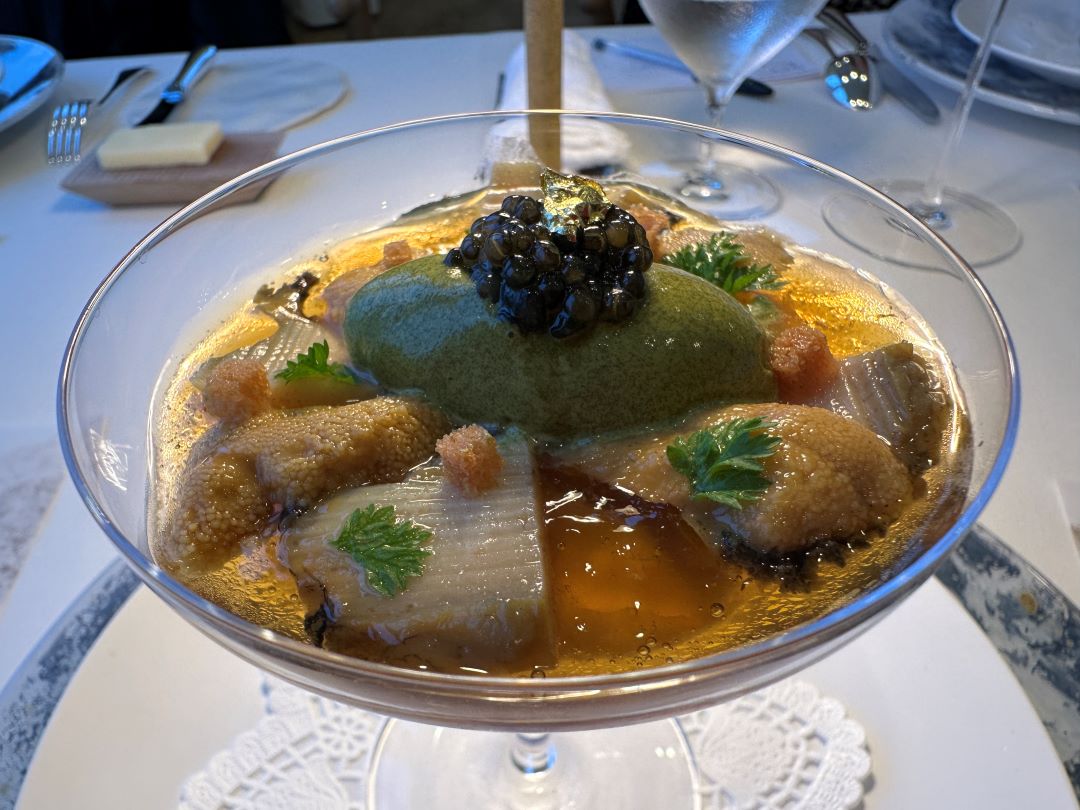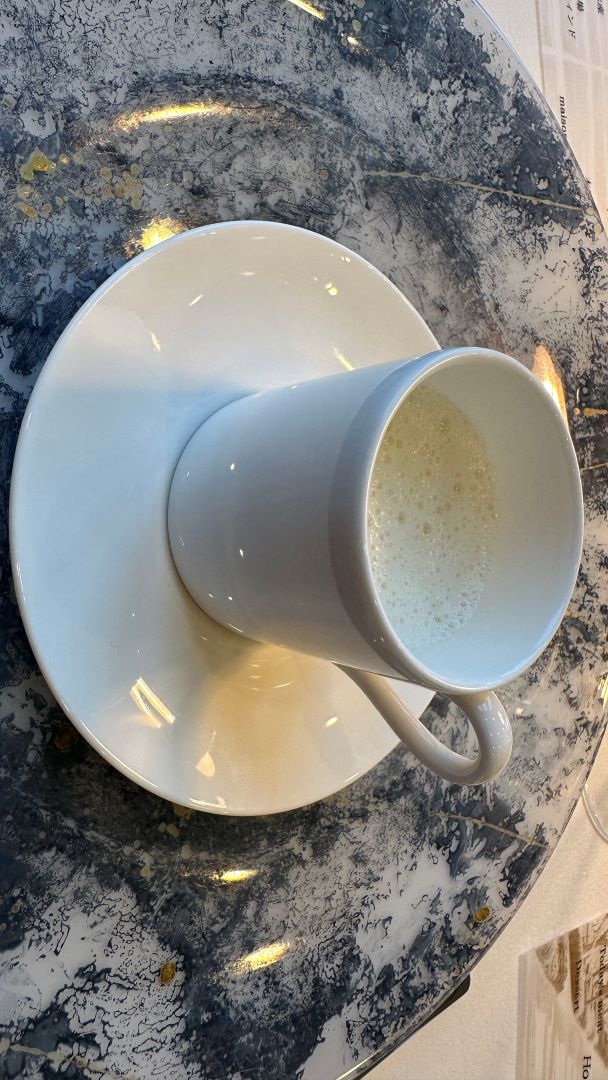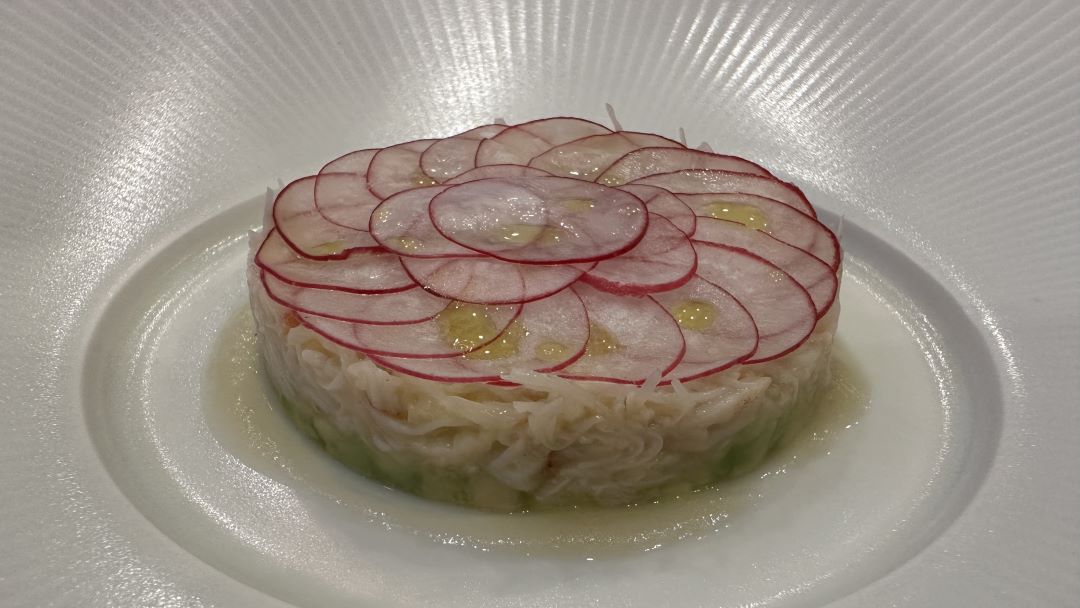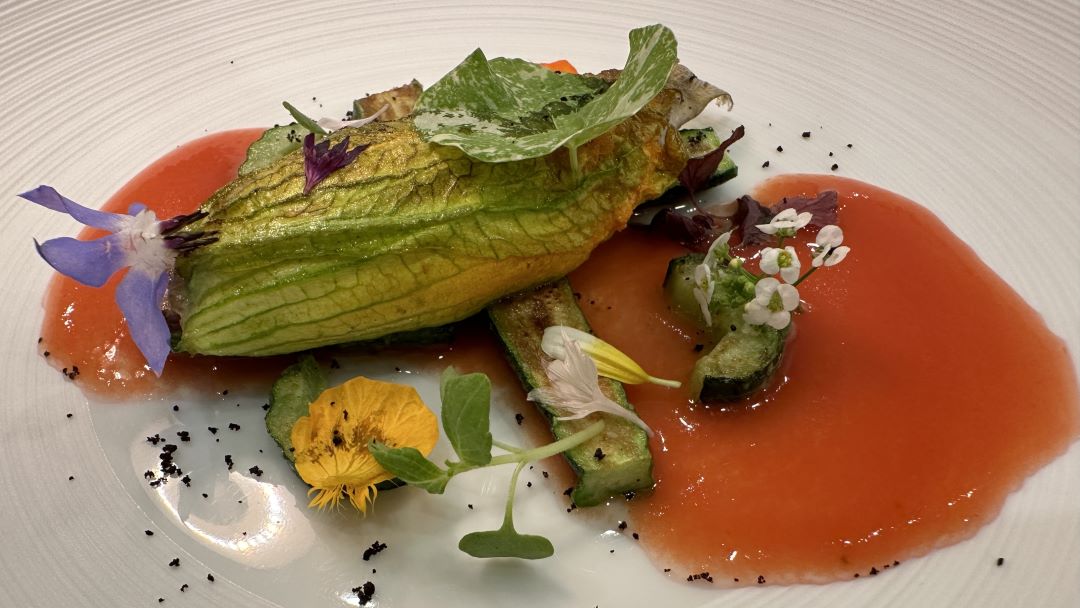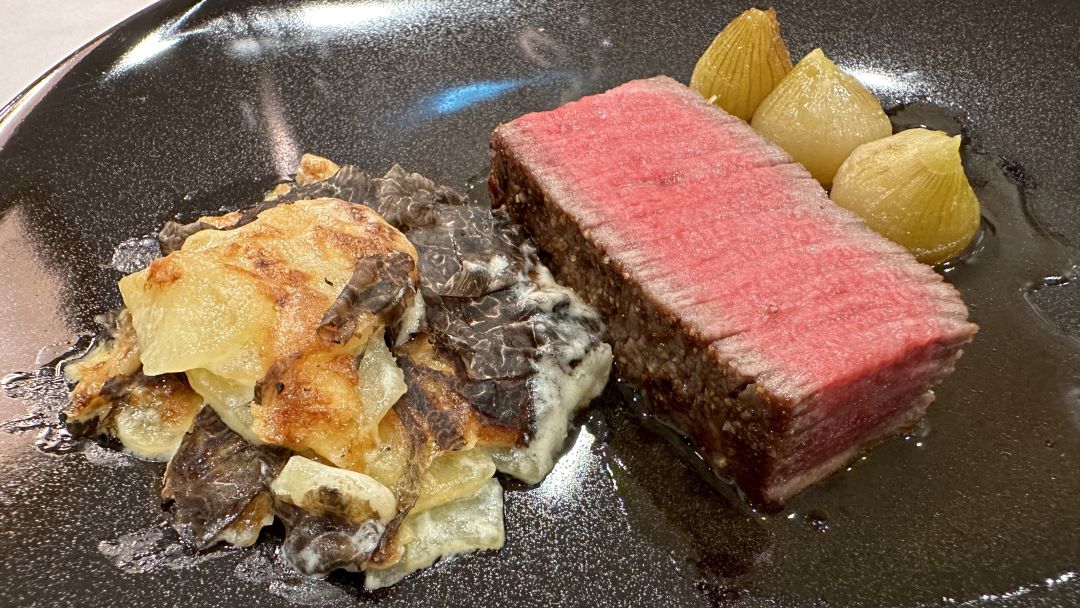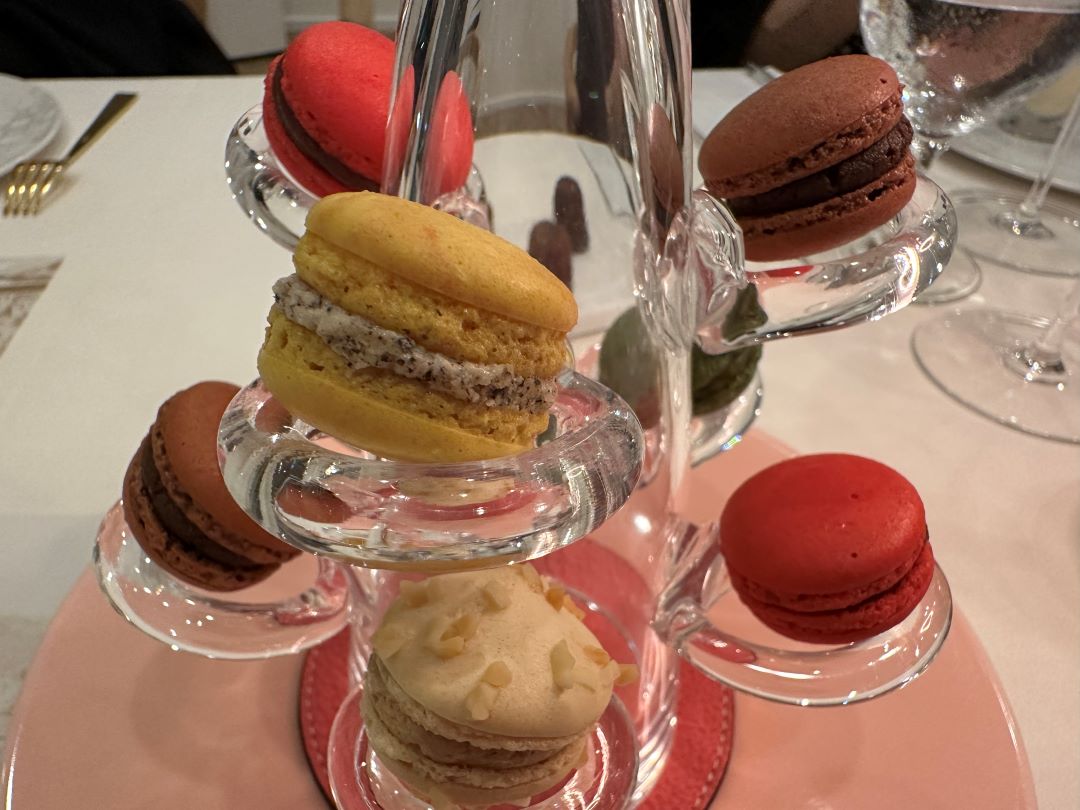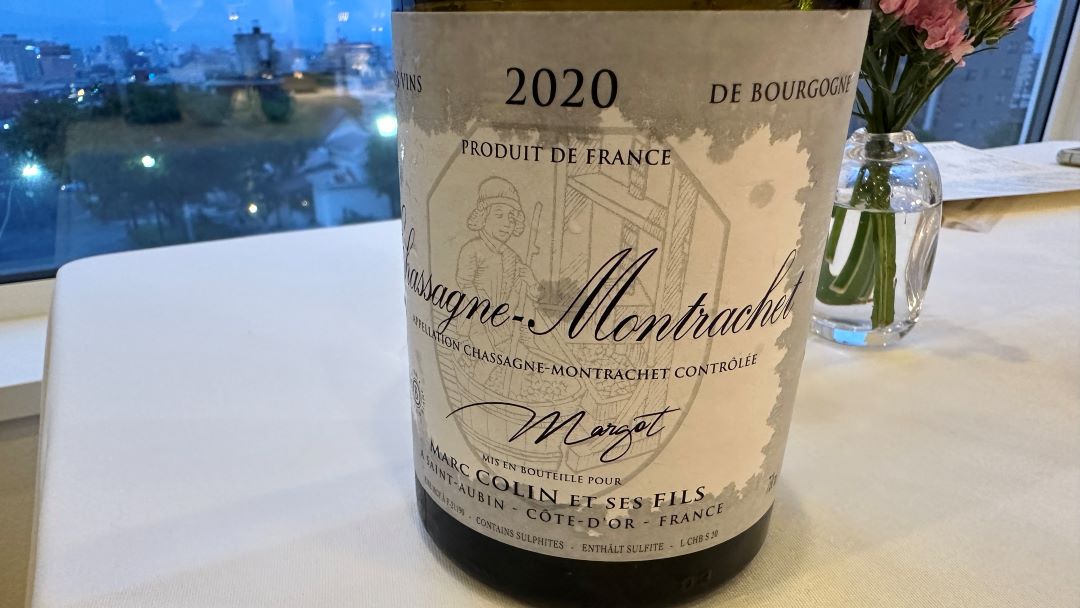Browse using the new Vinous website now. Launch →
Printed by, and for the sole use of . All rights reserved © 2015 Vinous Media
17-17 Motomachi
Hakodate
Hokkaido
040-0054, Japan
BY NEAL MARTIN | AUGUST 14, 2025
The Food:
Gougères
Cheese cream puff, sweetcorn soup and abalone liver with sea urchin
Stingray cheek “Kasube”
Hairy crab with apple, avocado and white radish
Spring fish (ayu) with flat fish (hirame)
Oguni beef with black truffles, potato dauphinoise and shallots
Melon parfait
Raspberry and vanilla soufflé
The Wine:
| 2020 Domaine Marc Colin & Fils Chassagne-Montrachet Margot | 91 |
There was a recent online debate about what makes a great restaurant. The obvious answer is: whatever your tastebuds tell you. But isn’t service just as important? Would you return to a place where the food is magnificent, yet the service is slack or unwelcoming? Service is an intrinsic part of any dining experience. Any restaurateur will tell you that as they forage ever harder for qualified staff. I’ll return to this subject at the end of this piece…
Maison Fujiya received a clutch of bons mots from an acquaintance of mine. It looked tempting: a fusion of French and Japanese cuisine plus a decent wine list, corkage accepted. Further digging revealed chef Keisuke Fujiya’s impressive CV. He was raised by a fisherman is Esashi, worked at various notable restaurants, including the esteemed Côte d’Or in Tokyo, and opened his own establishment in 2020. Coming full circle, Maison Fujiya restaurant sits right next to where Fujiya began his catering career in his hometown of Hakodate, where fresh seafood lands daily on his doorstep.
The entrance of Maison Fujiya.
Maison Fujiya is in Motomachi, a neighbourhood known for its profusion of Western-style residences and churches, hallmarks of where the American fleet landed in the 19th century. East meets West. Perched at the foot of Mount Hakodate, it is a spacious restaurant split over two floors, a bistro on the ground floor and the main dining room upstairs, flooded with light. The dining room’s elevated position grants a wonderful panorama across the city, so try to bag a window seat. We are shown to our table that could easily seat six by the maître d’, a handsome, impeccably groomed young chap in a matching jacket and waistcoat with a natty bow tie. Courteous to a fault, he wears a permanent smile and knows how to blend formal and informal.
The menu changes according to the seasons and ingredients that meet the chef’s approval. We start with three amuse-bouches. First, the cheese cream puff is unexpectedly dark in colour but light as air.
Abalone liver with sea urchin.
The abalone dish is the star, fished from waters in Ezo in northwest Honshu. Fujiya specifically uses abalone liver, which is green in hue since abalones tend to eat a lot of kelp. Garnished with caviar, edible gold leaf, sea urchin and an abalone jelly that has wonderful depth of flavour, this showcases the life-affirming freshness of its ingredients. It’s the kind of dish that gourmands travel from afar to savour.
Sweetcorn soup.
Completing the trio is a sweetcorn soup with cauliflower mousse served in a small teacup. I don’t know why, but Japanese sweetcorn always seems sweeter than elsewhere. This particular corn came from Nanae-cho in southwest Hokkaido and is so creamy in texture that I could easily devour another teacup. An impressive start.
Next comes a dish entitled “Ray Cheek Kasube.” I wonder what kasube means and later discover that it is local dialect for stingray. I did not anticipate the inclusion of a little Indian spice—a pinch of garam masala and squid ink. Fabulous.
Hairy crab with apple, avocado and white radish.
The kasube is served in tandem with hairy crab with apple sauce and avocado, crowned by a slice of wafer-thin radish. This is so simple, but the crab is off the charts in terms of flavour. No need for unnecessary frills. Let the crab speak! The apple lends a welcome sharpness, the avocado a soupçon of sweetness.
Spring fish (ayu).
Next comes ayu, or sweet fish from the Amanogawa River, which translates to “Milky Way.” This comes with a courgette flower and a brightly hued watermelon sauce. Again, so fresh and vibrant in flavour, light yet intense.
Flat fish (hirame).
Hirame is a flatfish, here served as a gratin with lemon rind and baby spinach. The fish is indescribably delicious, perfectly cooked so it can retain moisture, the burnt crust of the gratin so thin that it must have been blowtorched for a nanosecond.
Oguni beef with black truffles, potato dauphinoise and shallots.
The solitary meat dish is Oguni beef: black wagyu reared in Hokkaido and partnered with black truffles, potato dauphinoise and a neat row of shallots. There is beef, and there is Japanese beef. Nothing comes close. Every mouthful is perfect. It is not as melt-in-your-mouth as some wagyu, no extraordinarily high marbling, but it has a buttery taste (and by that I mean the texture of the beef rather than the chef using butter) that lingers long in the mouth.
Macarons.
An additional course of melon parfait precedes the raspberry and vanilla soufflé. This ranks as good as the famous soufflé Michel Roux dished out to thousands of diners at Le Gavroche. Since Roux shut its doors, this is as good as you will find. To finish, a miniature glass “tree” of wonderful macarons, more than we can eat.
The
restaurant has a decent wine list that, as you would expect, leans towards classic
French wine regions. The 2020 Chassagne-Montrachet Margot from
Domaine Marc Colin & Fils is drinking beautifully. The nose blossoms
with citrus fruit, dried apricot and hints of chamomile over the course of an
hour. It seems to evolve more delineation with each minute. The palate is not
the most complex in the world, yet this Chassagne is all about balance and
poise, with a lingering finish that tempts you back for more. We also drink the
2016 Chapelle de Potensac, but I find it slightly oxidized on the nose
and in the end, we give up on the bottle.
Maison Fujiya demonstrates deft use of ingredients, especially pescatarian, and enhances them with French gastronomy. The cuisine maintains a high standard, perhaps not with the finesse and complexity that warrants Michelin consideration, but not far off. It was an excellent dinner.
We depart and thank Chef Fujiya downstairs. Unprompted, the young and devilishly handsome maître d’ holds out his arm to escort my elderly mother-in-law to the exit door. She blushes. She hasn’t taken a man’s arm in decades. The unsolicited gesture elevates the evening for everyone, beyond the pleasure that the most expensive or lauded restaurant could have given.
What makes a great restaurant?
It's the small things that mean a lot.
© 2025, Vinous. No portion of this article may be copied, shared or redistributed without prior consent from Vinous. Doing so is not only a violation of our copyright but also threatens the survival of independent wine criticism.
You Might Also Enjoy
Vinous Table: Uni Murakami, Hokkaido, Japan, Neal Martin, August 2025
Vinous Table: Sens & Saveurs, Tokyo, Japan, Neal Martin, August 2025
Japan Gastronomy: A Primer, Neal Martin, April 2024


